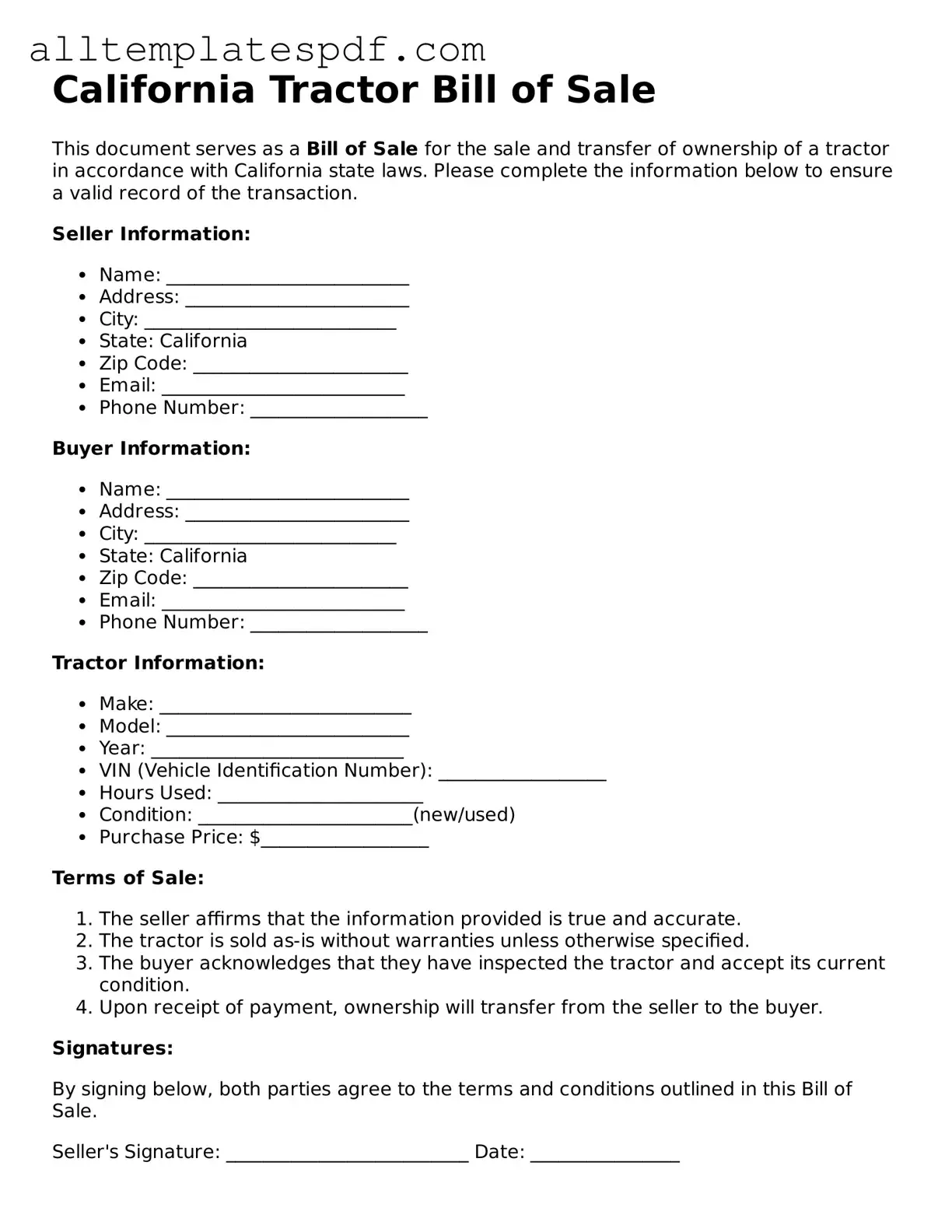When filling out the California Tractor Bill of Sale form, individuals often overlook critical details that can lead to complications down the line. One common mistake is failing to provide complete information about the tractor being sold. Buyers and sellers must accurately describe the make, model, year, and Vehicle Identification Number (VIN). Omitting any of these details can create confusion and potential disputes.
Another frequent error is neglecting to include the sale price. The form requires a clear indication of how much the tractor is being sold for. Without this information, the transaction may not be legally recognized, and both parties could face issues if disputes arise later regarding the payment.
Many people also forget to date the form. The date of the sale is crucial for record-keeping and establishing the timeline of ownership. Without a proper date, it may become difficult to prove when the transaction occurred, which can complicate issues related to warranties or liabilities.
Providing incorrect signatures is yet another mistake. Both the seller and the buyer must sign the form to validate the transaction. If either party neglects to sign or signs incorrectly, it could invalidate the sale. Ensuring that signatures are clear and legible is essential for avoiding future disputes.
In addition, individuals sometimes fail to make copies of the completed Bill of Sale. Keeping a copy for personal records is vital. This document serves as proof of the transaction and can be needed for future reference, whether for tax purposes or in case of any disputes.
Lastly, many people overlook the importance of having the form notarized. While notarization is not always required, it adds an extra layer of legitimacy to the transaction. A notary public can help verify the identities of both parties and ensure that the signatures are authentic, which can be beneficial if any legal issues arise.
